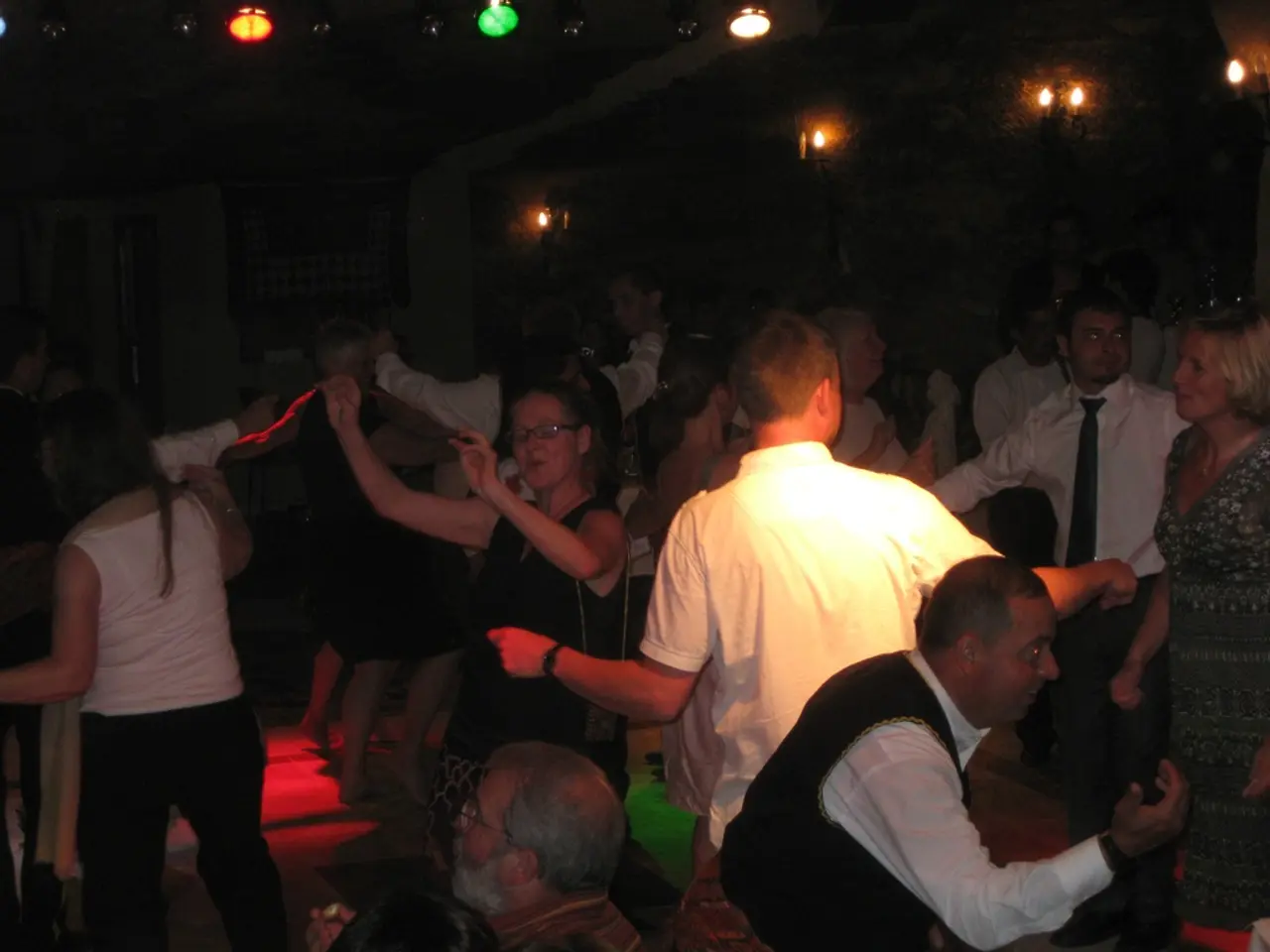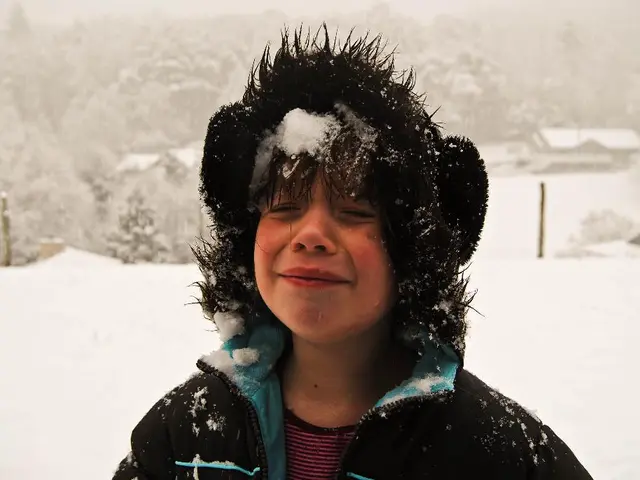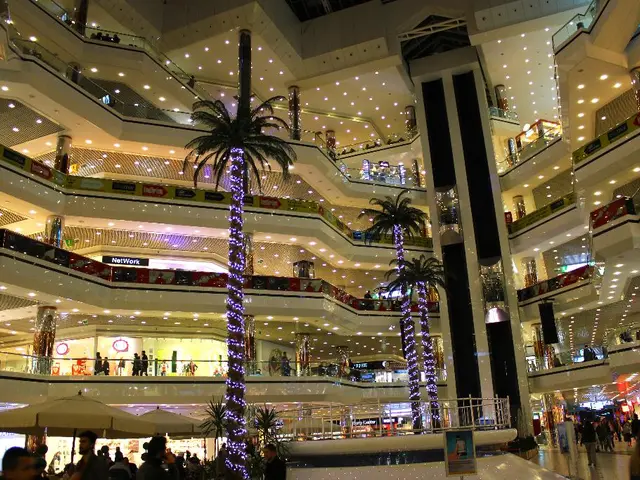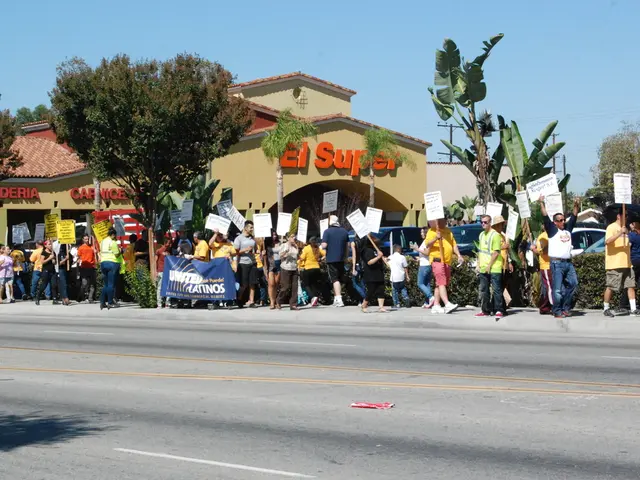Summer's Sizzling Wellness Fad: Non-Stop Party Pleasure
In the heart of cities across the UK and beyond, a cultural phenomenon is experiencing a resurgence – rave culture. Far from being mere parties, dancefloors are offering an alternative to the monotony of curated feeds, algorithmic validation, and endless scrolling. They provide a collective euphoria untethered from digital perfection, offering release, respite, and introspection.
Rave spaces, particularly in the context of rave culture, have historically been sanctuaries for marginalized communities such as queer, immigrant, and working-class communities. Kesang Ball, Co-Founder of Trippin, highlights this historical significance, emphasizing the importance of spaces like these in today's society.
One pioneering collective at the forefront of this movement is Pxssy Palace, teaming up with Anahata Collective to create events designed to satisfy all seven types of rest. This collective centres Black, Indigenous, and POC communities who are women, trans, queer, intersex, or non-binary, providing a platform for self-expression and connection.
Josephine Platt, a somatic practitioner, sees a strong connection between raving and somatic practice. Raving offers a means of shifting from the mind into the body, tuning into sensation, presence, and place. Lulah Francs, meanwhile, mentions events like R3 Sound System and Rave 2 Raise, where partying becomes a form of resistance and contribution.
Paul notes that clubs have always been revolutionary spaces, with the Hacienda being a particular example of a cultural revolution that rejected social hierarchies. Dancing is seen as a way of reclaiming agency, time, and joy, and is compared to a religious experience in its ability to evoke deep emotion in people.
People are attending raves for reasons beyond enjoyment, often seeking escape from the world's problems and reconnection with friends and childhood selves. In the UK, there is a high demand for meaningful connections, with 80% of people surveyed believing their lives would benefit from more of them, yet 63% admit they spend more time on social media than having deep, real-world conversations.
The revival of rave culture today is deeply informed by climate anxiety, housing crises, political instability, and social isolation. These urgent issues shape rave spaces as vital sites of community, creative expression, resistance, and awareness-raising. Raves are seen as both an escape and a form of resistance, with some viewing them as political acts and spaces of protest, solidarity, and self-expression.
Merging saunas with raving is seen as a genuine evolution of rave culture, shifting it from pure hedonism to something more intentional and community-driven. Kesang Ball, Co-Founder of Trippin, notes a shift towards intentional spaces in rave culture, including daytime raves, alcohol-free zones, and dancefloors designed around "intersections of interest."
As the future becomes more uncertain, the dance floor remains a space for hope. Lulah Francs sees today's dance spaces as multi-functional spaces for connection, reflection, and activism, questioning whether escapism should be used as a numbing agent or as a means of making change. The revival of rave culture is not a nostalgic copy of the past, but is evolving to respond to a generation shaped by climate anxiety, housing crises, political instability, and a loneliness epidemic.
- Rave spaces, historically, serve as sanctuaries for marginalized communities like queer, immigrant, and working-class individuals, as emphasized by Kesang Ball, Co-Founder of Trippin.
- Pxssy Palace, a pioneering collective, collaborates with Anahata Collective to design events that cater to the seven types of rest, catering to Black, Indigenous, and POC communities who are women, trans, queer, intersex, or non-binary.
- Josephine Platt, a somatic practitioner, sees a connection between raving and somatic practice, regarding raving as a means to move from the mind into the body and tune into sensation.
- Lulah Francs mentions R3 Sound System and Rave 2 Raise, events where partying becomes a form of resistance and contribution to society.
- In the context of rave culture, clubs are seen as revolutionary spaces that reject social hierarchies, as noted by Paul.
- Dancing is perceived as a way to reclaim agency, time, and joy, and is compared to a religious experience due to its ability to evoke deep emotion in individuals.
- People attend raves not just for fun, but to escape the world's problems and reconnect with friends and their childhood selves.
- The revival of rave culture today reflects climate anxiety, housing crises, political instability, and social isolation, making rave spaces vital sites of community, creative expression, resistance, and awareness-raising.
- Raves are seen as both an escape and a form of resistance, with some viewing them as political acts and spaces of protest, solidarity, and self-expression.
- Merging saunas with raving represents a genuine evolution of rave culture, shifting it from pure hedonism to something more intentional and community-driven.
- As the future becomes uncertain, the dance floor remains a space for hope, with today's dance spaces seen as multi-functional spaces for connection, reflection, and activism, prompting questions about whether escapism should be used for numbing or making change.




